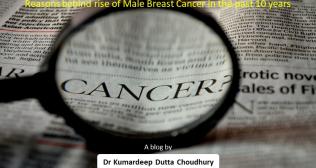Abdominal Mass In Children - A Simple Approach
4-year-old boy with left sided abdominal lump, which was gradually increasing in size for the last 1 month. No complaints of bowel or bladder disturbance, fever, weight loss, or abdominal pain. Child is otherwise well. Systemic examination is otherwise normal
Diagnostic approach depends on
- Location of Mass
- Organ of Origin
- Description of Mass
1-Location of mass:
Right upper quadrant (RUQ) contains liver, right kidney, gallbladder, colon, pancreas.
Left upper quadrant (LUQ) contains Stomach, left kidney, spleen, colon, pancreas.
Right lower quadrant (RLQ) contains Colon, appendix, small intestine, ureter, major arteries and veins to right leg.
Left lower quadrant(LLQ) contains small intestine, colon, ureter, major arteries and veins to left leg.
2-Organ of origin:
| Organ/Site of origin | Malignant | Benign |
| Liver | Hepatoblastoma, HCC | Hemangioma |
| Adrenal | Neuroblastoma | Adrenal cyst/haemorrhage |
| Kidney | Wilms tumor | Polycystic kidney, hydronephrosis |
| Bowel | Non-Hodgkin’s lymphoma | Mesenteric cyst, duplication cyst |
| Pelivs | RMS, GCT, Neuroblastoma, lymphoma | Ovarian cyst |
| Retroperitonium | Neuroblastoma, Sarcoma | Teratoma |
Differential diagnosis:
| Neuroblastoma | Wilms tumor |
| Younger age (<2 year age) | Slightly older age (3-4year age) |
| Poorly marginated | Well circumscribed |
| Crosses midline more often | Less common to cross midline |
| Calcification 90% | Uncommon calicification:10-15% |
| Encases vascular structures | Displaces adjacent structures, extends into IVC/renal vein |
Diagnosis:
It is a case of Wilms tumor also known as nephroblastoma, it is the most common primary renal tumor of childhood. In 80% of cases, it is diagnosed before age of 5 years. Peak age of presentation is 2.5-3.5 years. Presents as painless upper abdominal mass (70-80%), haematuria (20%), hypertension (25%). It can be associated with congenital anomalies like WAGR and Beckwith Weidman syndrome. It can metastasis to lungs, liver, regional lymph nodes.
Management:
Multimodality, stage and risk adopted approach is the standard of care. It is a highly chemo and radiosensitive tumor. Surgery + Chemotherapy+/- radiotherapy forms the basis of treatment.
Underwent left radial nephrectomy and lymph node sampling, intraoperative tumor rupture
- HPR – epithelial predominant Wilms tumor, St III
- Completed radiotherapy and adjuvant chemotherapy 3 drugs for 24 weeks; Vincristine, actinomycin D, adriamycin
- Doing well at present
Authored By – Dr Anand Kumar K (MD Pediatrics),Consultant, Pediatric Hematologist, Oncologist and BMT physician, Fortis Hospital, Bannerghatta road, Bengaluru.



















